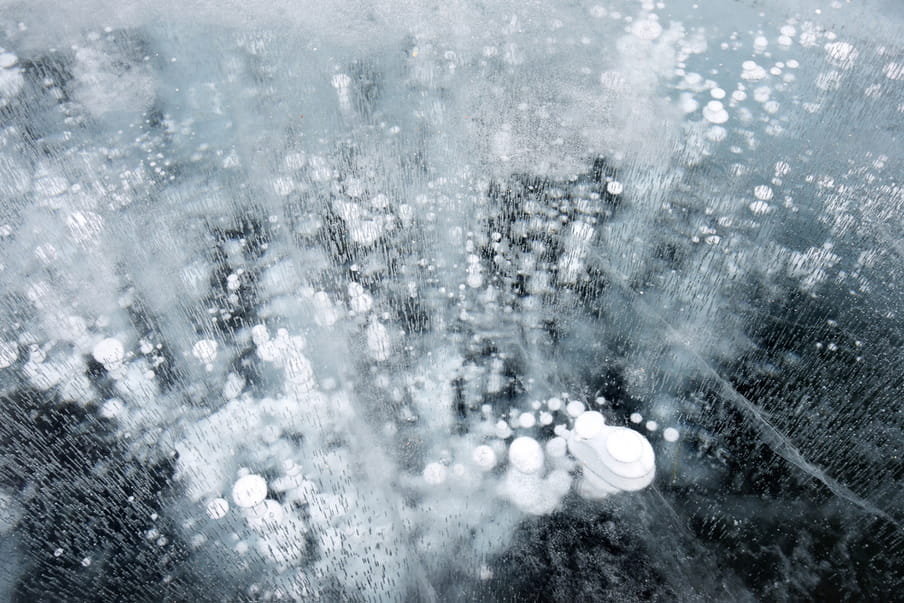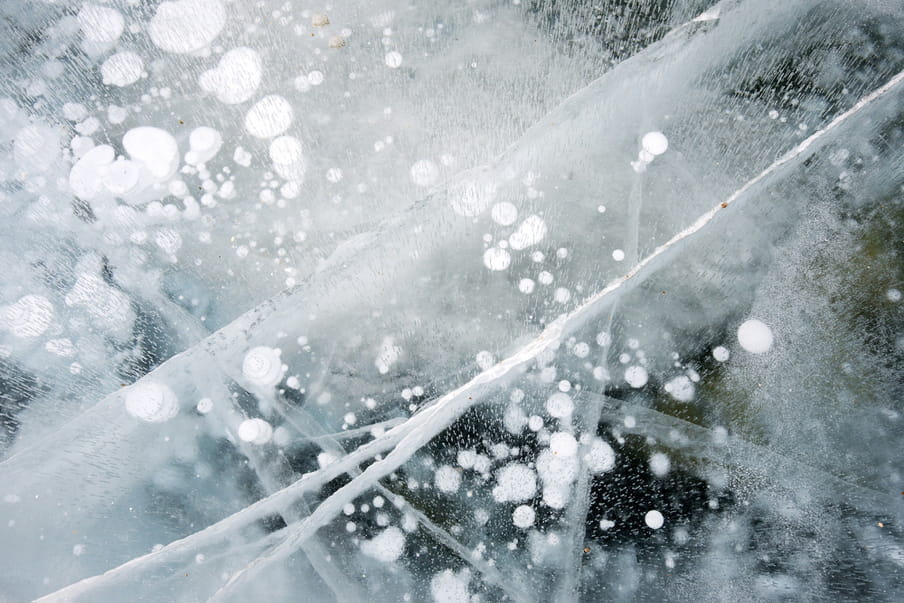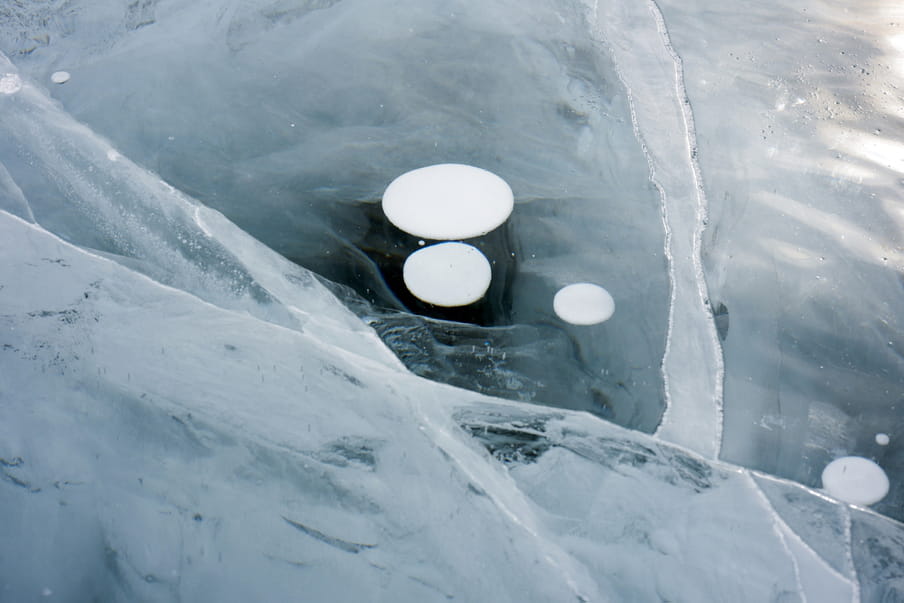Most of us have heard about the greenhouse gas chiefly to blame for global warming: carbon dioxide. Less well known is the second most important greenhouse gas in the climate crisis: methane. Its detrimental effects are worsening rapidly although scientists weren’t really sure why – until recently.
Methane is the simplest hydrocarbon. It’s one carbon atom and four hydrogen atoms fused together, making it super versatile for industrial purposes and as a store of energy.
We use it for everything from home heating to rocket fuel. We mine it from the ground in the form of natural gas, and it’s produced from agriculture and the breakdown of organic material in landfills and wetlands.
Emissions of methane have risen steadily for centuries, driven by increased cultivation of rice paddies, more animal rearing and the growing fossil fuel industry. But over the past few decades, emissions have skyrocketed – greatly worsening the climate emergency.

The second-worst offender
A molecule of methane only stays in the atmosphere for about 12 years (for comparison, carbon dioxide stays there for about a hundred). Unfortunately, during its relatively short residence, methane contributes about 86 times more to global heating than carbon dioxide.
That’s why, methane alone is responsible for about 20% of all global warming – about as much as all the other greenhouse gases combined, excluding carbon dioxide.
Since its detrimental effects are so powerful, getting rid of methane quickly would bring enormous benefits. In fact, addressing the second-worst greenhouse gas now could be one of the best things we can do to rapidly reduce the effects of climate change.
While the concentration of carbon dioxide in the atmosphere has increased by about 55% since the Industrial Revolution (from about 270 ppm to almost 420 ppm – parts per million), methane has increased by about 270% (from about 700 ppb to almost 1900 ppb – parts per billion). In 2019, there was more methane in the atmosphere than at any point in at least the past 800,000 years, which is as far back as our records from Antarctic ice cores go.
Despite this rapid increase in methane levels, here’s the good news: methane is still much more scarce than carbon dioxide. The concentration of methane in the atmosphere is about 200 times less than carbon dioxide, because methane is removed more quickly from the atmosphere by natural processes.
The bad news: methane sources are hard to track. Some basic parts of the global methane cycle are still not well understood by scientists. Since methane is relatively short-lived and sparse in the atmosphere, it requires specialised equipment all over the world and in space to track accurately. Tropical wetlands, for instance, are particularly important natural sources of methane, but widely-spaced ground-based sensors can give conflicting results and clouds overhead can obstruct a clear view from orbiting satellites.

Old problem, new science
Understanding of the methane problem is evolving fast. Already this year, several new studies have converged on potential solutions: the methane cycle is coming into sharper focus.
Initial evidence of rising methane levels (about 10-15 years ago) attributed the surge primarily to natural wetlands and agriculture. That story may be changing.
Methane is also concentrated in the Arctic, in permafrost soil and in frozen lake beds. In some places, so much methane is leaking from the earth’s surface that it’s possible to set the ground on fire.
This is mainly because methane-producing bacteria (commonly found in wetlands or at the bottom of the ocean) have fundamentally different chemistry from animals and plants. These bacteria “breathe” in hydrogen and carbon dioxide, and “breathe” out water and methane. Their methane is trapped in underwater bubbles in frozen soil and ice, raising fears that warming polar regions could unleash a “methane bomb” to push atmospheric temperatures even higher.
This might raise your neck hairs: methane leakage everywhere! However, in recent years scientists have become more certain that the risks of runaway methane emissions from melting permafrost are low, for now.
Among the new studies, one found that previous estimates of natural sources of methane had been over-estimated by a factor of 10. This would be a shocking miscalculation of one of the key parts in the planet’s biogeochemical cycle. But it’s actually an encouraging sign: if all that extra methane isn’t coming from some unknown or misunderstood natural process – then it’s coming from humans.

A familiar culprit
And then there’s the fossil fuel industry.
If the earth is not releasing substantially higher levels of methane, industrial emissions of greenhouse gases are an alternative source. New evidence is emerging that the fossil fuel industry may indeed be the prime culprit.
Natural gas, the leading fuel source for electricity generation in the US and Europe, consists almost entirely of methane. As coal and nuclear power have fallen out of favour in recent years, retired power plants have been replaced by renewables and natural gas, both of which are growing quickly.
Fracking is a way to get natural gas out of the ground, producing both oil and natural gas. For many years, even before fracking, oil was much more valuable and companies just vented the surplus methane into the atmosphere. In some places, oil producers were required to “flare” the gas by burning it on site, although enforcement was often lax. At night in the oil fields of North Dakota and Nigeria, there are so many flares that even sparsely populated regions can be seen from space, like a booming metropolis of light.
Natural gas is routinely touted by the fossil fuel industry as a “bridge fuel”, a means to power the global economy through the energy transition from dirtier fossil fuels to renewables. Their pitch is founded on the idea that, when burned, natural gas emits less carbon dioxide than other fossil fuels. That’s true.
But natural gas is an improvement over other fossil fuels such as coal and oil only if the rate of leakage (during drilling, refining, storage, and transportation by pipelines to power plants and homes) remains less than about 1%.
In reality, leakage of natural gas is persistent and widespread. In 2015, for instance, a massive leak in a natural gas storage facility in Aliso Canyon, California spilled 109,000 tons of natural gas into the air, the largest leak in US history. Because industrial natural gas is invisible and odourless (the rotten egg smell in domestic gas is added later, to help detect leaks), public outrage tends to be less severe than during oil spills.
As it turns out, leaks have probably been much more frequent than reported by the fossil fuel industry. Provisional data released earlier this year, by the Environmental Defense Fund, an NGO which launched its own satellite to survey gas leaks, showed widespread leaks occurring at triple the levels previously reported.
Since the outbreak of the coronavirus pandemic, the Trump administration has directed the Environmental Protection Agency to cease enforcement of all environmental regulations – and there’s compelling evidence that methane emissions may be rising as a result.
Curbing methane at no net cost
But there is hope. Methane is a big problem, but emissions can be dealt with much more quickly than carbon dioxide. A recent study from the International Energy Agency found that about 40% of the fossil fuel industry’s methane emissions could be stopped at no net cost by actions like replacing outdated processing equipment in order to recover and sell gas that would have otherwise escaped.
Along the way, incremental changes could add up to make a huge difference. Some farmers have begun adjusting the feedstock for cattle – adding 3% seaweed to cows’ diets can inhibit the growth of methane-generating bacteria in their stomachs, reducing their methane emissions by up to 80%. If we made other small changes too – such as capturing methane from landfills and manure, or cutting back meat consumption, or modifying rice cultivation techniques – we’d do even better.
Much more important to the planet and its people is to help accelerate a systemic transition to a world without fossil fuels – and a just transition for workers in the fossil fuel industry.
The big story on methane is becoming starkly simple. A rapid crackdown on the fossil fuel industry is our best first step to reversing the rising trend in emissions of the planet’s second-worst greenhouse gas.
Dig deeper
 Outgrowing growth: why quality of life, not GDP, should be our measure of success
Mainstream economics still thinks growth is essential, but this blind belief in GDP is just enriching the rich and killing the planet. We don’t need more growth to improve people’s lives. By working less, buying and producing less, and investing in public services, we can improve quality of life – and fight the climate crisis.
Outgrowing growth: why quality of life, not GDP, should be our measure of success
Mainstream economics still thinks growth is essential, but this blind belief in GDP is just enriching the rich and killing the planet. We don’t need more growth to improve people’s lives. By working less, buying and producing less, and investing in public services, we can improve quality of life – and fight the climate crisis.
 The Great Barrier Reef is dying even faster than before. Here’s why that matters to all of us
All across the globe, coral reefs are dying. A worrying new report shows the Great Barrier Reef is in particular distress right now. It’s a disaster in the making for millions of people and species.
The Great Barrier Reef is dying even faster than before. Here’s why that matters to all of us
All across the globe, coral reefs are dying. A worrying new report shows the Great Barrier Reef is in particular distress right now. It’s a disaster in the making for millions of people and species.


